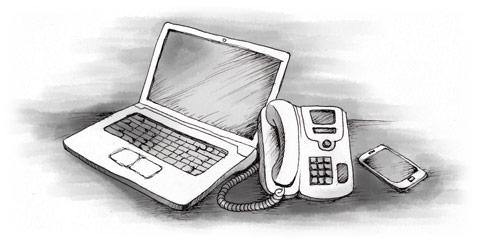Internet cafés in India charge between Rs10 and Rs30 per hour. They usually have broadband connections. Keep in mind, however, that even 256K/bit connections are considered broad-band in India. Nevertheless, the connections are usually fast enough to support services such as Skype.
Internet cafés in rural areas might only have limited Internet access, and you may only be able to check your email. Additional services, such as scanning and printing, are usually available but charged extra.
Internet access in India
As with phone lines there are many internet providers available in India. The quantity certainly does no make the process of choosing a provider any easier. You should ask friends and co-workers for recommendations. The most obvious choice would be BSNL, as they operate throughout all of India. Because of this, however, their rates are comparatively high (and they require you to purchase a fixed phone line as well).
There are many private companies offering Internet only solutions in India. They are good alternatives to BSNL since they are usually cheaper and don't take as long as BSNL to activate your connection. Some of them still need a land line installed but access alternatives, such as TV cable connections, are widely available as well.
Since the Indian internet market is very chaotic – new companies being founded every day, others merging together or going bankrupt – you may be forced to change your provider every couple of months. You could very well wake up one morning without internet service, only to discover days or weeks later that your provider no longer exists.
Whichever offer you take, keep in mind that the speeds advertised by Indian ISPs are not guaranteed. In fact, you will probably only get a fraction of the bandwidth promised. You should, therefore, consider settling for an offer with lower bandwidth as that will be more realistic to actually get and, of course, cheaper.
3G network in India
As one of the leading IT countries, India puts great effort into expanding its 3G network. In early 2009, only small portions of India were covered by 3G services, but Indian companies were still investing heavily in network expansion.
The greatest advantage of 3G services is that they can either be accessed through your cell phone or, through your computer via USB adapter. You do not need separate Internet connections anymore. The availability of 3G services sit still limited to major cities, however, and bandwidth shortages are common.

